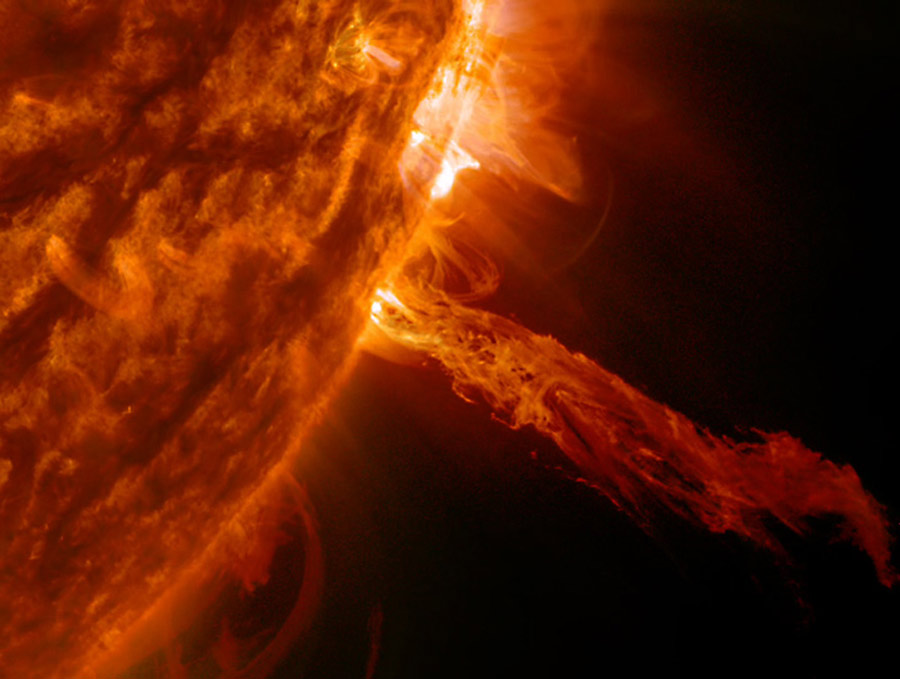
In middle and high school, most people learn about the three states of matter we interact with in our everyday lives: solid, liquid and gas. Some students may have even been introduced to the idea of plasma. But if those students ran a Google search asking how many states of matter there are, they’d come across different answers from different sources. The BBC Science Focus magazine reports there are eight states of matter, but the Google search will yield other results, too. These strange states have equally strange names, such as quark-gluon plasma. Assistant professor in the Department of Physics Yafis Barlas provides his input in the debate over how many states of matter exist.
How many states of matter are there?
That’s sort of a difficult question to answer, and I think different people have, probably, different views on it. The way I like to think of states of matter is, I think of classical states of matter versus quantum states of matter. At least if you think about classical states of matter, there’s pretty much three. You could have solid, liquid and gas phase. Some people think plasma should be considered as a different state of matter, but it’s really an ionized gas. So one of the things that you can do to plasma is you can now apply magnetic fields, electric fields to confine it and use it for energy purposes. When it comes to quantum states of matter, then it gets more interesting.
Do all states of matter exist naturally?
Everything exists naturally. It has to be coerced at very, very low temperature, but it is natural. Physics generally is about energy scales and temperature scales. When you go down to very, very low energies, or very, very low temperatures, then interesting things happen, where you can realize more exotic states of matter. They don’t exist in our everyday room-temperature physics, or they might exist. We haven’t figured how to make them stable at that temperature. But they might exist in the universe where things are very, very cool. It depends on the conditions. Certainly, you can create them in the lab.
Is dark matter another state of matter?
What is dark about it is that it does not respond to light. What astronomers noticed is that they could see some galaxies moving around, but it didn’t seem like there was any matter in there. But the motions showed that there was some gravitational force that was dark to our probes. That’s what led to the notion of dark matter. I think it’s matter, it’s just dark to us. We don’t know what it is, because we cannot see it. We cannot experiment on something that’s dark to us. Light doesn’t mean visible light. It could be radio waves or anything that’s on the electromagnetic spectrum. Maybe it just absorbs all the light that’s hitting it. I’m not an expert in this so I can’t really guess, but I would say that nobody really knows if it’s in a solid state, or a gas state or a liquid state. I assume that it’s some sort of solid state, since it exerts a gravitational force.
What defines a state of matter?
Experimentally, it must be distinct. Two states of matter must have distinct experimental properties. A solid and a liquid cannot be compressed, but a gas can be. They respond differently to our probes. If they did the same thing, they would not be characterized as different states of matter. But it’s hard to really define that. I think that’s the crux of the problem, we know what a solid, liquid and gas are, they’re easy, but when we start adding on top of that, then it becomes more complicated.
If somebody walked up to you on the street and said, “You have five seconds. How many states of matter are there?” what would you say?
I would say three.
And if you want to go into the quantum states?
From my own research, I would say that there are at least three [quantum states]. I would define three possible states, one of them is superconductivity, the other is Bose-Einstein condensate, and one is something that I worked on which is the fractional quantum Hall state, which is a topological state of matter. Topological states … have some mathematical characterization that distinguishes them from each other. These ideas are built on notions of topology from mathematics.
We’ve borrowed many ideas from the field of topology to characterize the differences in these systems because there are experimental consequences to having different topologies.
Why is it important to study states of matter, especially ones we don’t encounter on a day-to-day basis?
We want to understand it. There are applications. For example, superconducting magnets allow very high magnetic fields to be obtained. If we didn’t have superconducting magnets, then you wouldn’t have MRIs.















